
Sants-Montjuïc: The Cultural Heartbeat of Barcelona
Discover the perfect blend of history, culture, and local life in Sants-Montjuïc, Barcelona's dynamic neighborhood with stunning views, vibrant markets, and iconic landmarks.
Sants-Montjuïc is a neighborhood in Barcelona that beautifully blends the city's rich history with modern vibrancy. As you walk through its streets, you'll encounter a fascinating mix of old and new, from historic landmarks to contemporary attractions. This area is famous for its stunning views from Montjuïc hill, where you can explore the Montjuïc Castle, enjoy the magic fountain show, or take a relaxing stroll through the lush gardens. The neighborhood is also a paradise for art and museum enthusiasts. The Museu Nacional d'Art de Catalunya (MNAC) houses an impressive collection of Catalan art, while the Fundació Joan Miró showcases the works of the renowned surrealist artist. For sports fans, the Olympic Stadium, which hosted the 1992 Summer Olympics, offers a glimpse into the city's sporting heritage. Sants-Montjuïc is not just about sightseeing; it’s also a hub for local life. The bustling streets of Sants are filled with traditional shops, tapas bars, and vibrant markets where you can experience the authentic Catalan lifestyle. The Mercat de Sants is a must-visit for food lovers, offering a variety of fresh produce and local delicacies. Whether you're looking to explore Barcelona's cultural landmarks, relax in scenic parks, or immerse yourself in local traditions, Sants-Montjuïc has something for everyone.
Local tips in Sants-Montjuïc
- Visit Montjuïc Hill early in the morning to avoid crowds and enjoy peaceful views.
- Wear comfortable shoes; the area is best explored on foot with some steep paths.
- Catch the Magic Fountain show in the evening for a spectacular display of lights and music.
- Try local Catalan dishes at the traditional tapas bars in Sants.
- Take the cable car to Montjuïc Castle for a unique aerial view of the city.
Sants-Montjuïc: The Cultural Heartbeat of Barcelona
Sants-Montjuïc is a neighborhood in Barcelona that beautifully blends the city's rich history with modern vibrancy. As you walk through its streets, you'll encounter a fascinating mix of old and new, from historic landmarks to contemporary attractions. This area is famous for its stunning views from Montjuïc hill, where you can explore the Montjuïc Castle, enjoy the magic fountain show, or take a relaxing stroll through the lush gardens. The neighborhood is also a paradise for art and museum enthusiasts. The Museu Nacional d'Art de Catalunya (MNAC) houses an impressive collection of Catalan art, while the Fundació Joan Miró showcases the works of the renowned surrealist artist. For sports fans, the Olympic Stadium, which hosted the 1992 Summer Olympics, offers a glimpse into the city's sporting heritage. Sants-Montjuïc is not just about sightseeing; it’s also a hub for local life. The bustling streets of Sants are filled with traditional shops, tapas bars, and vibrant markets where you can experience the authentic Catalan lifestyle. The Mercat de Sants is a must-visit for food lovers, offering a variety of fresh produce and local delicacies. Whether you're looking to explore Barcelona's cultural landmarks, relax in scenic parks, or immerse yourself in local traditions, Sants-Montjuïc has something for everyone.
Iconic landmarks you can’t miss
Montjuïc Castle
Discover Montjuïc Castle, a historic fortress with breathtaking views, rich history, and a serene atmosphere in the heart of Barcelona.

Parc del Mirador del Poble-sec
Experience the beauty and tranquility of Parc del Mirador del Poble-sec, a serene retreat with stunning views in the heart of Barcelona.
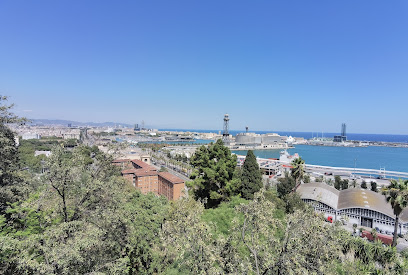
Jardins de la Rambla de Sants
Explore the serene beauty of Jardins de la Rambla de Sants, a lush green park in Sants-Montjuïc, perfect for relaxation and leisurely strolls in Barcelona.
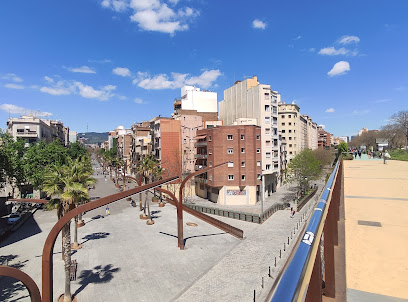
Mirador de Montjuic
Discover breathtaking views and rich history at Mirador de Montjuïc, Barcelona's premier observation deck for panoramic cityscapes.
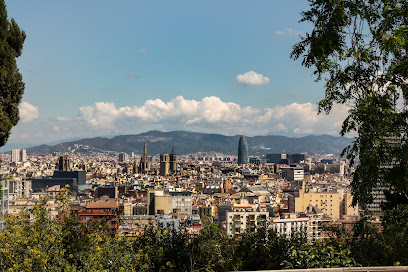
Montjuïc Lighthouse
Explore Montjuïc Lighthouse, a historical landmark offering stunning views and rich maritime heritage in the heart of Barcelona's beautiful Parc de Montjuïc.
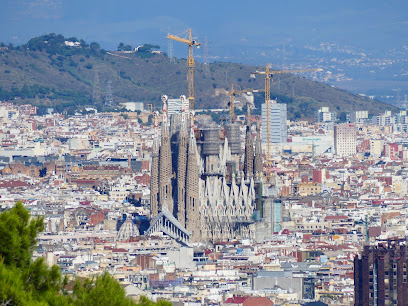
Barcelona City Viewpoint
Experience breathtaking views of Barcelona's stunning architecture and landscapes at the iconic Barcelona City Viewpoint, a must-visit for all tourists.
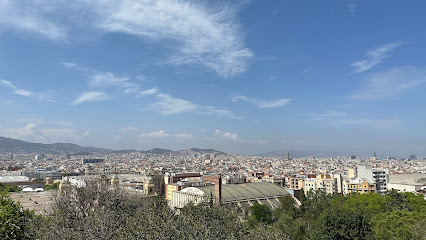
Bell
Explore Bell, a historical landmark in Barcelona's Sants-Montjuïc district, where history and architectural beauty converge for an unforgettable experience.
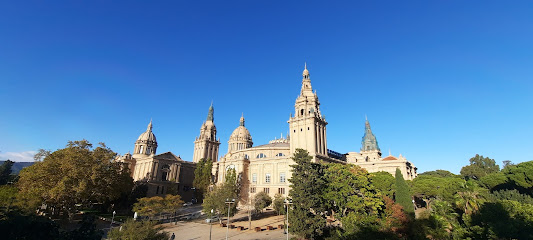
Amigos de la Torre de Suecia 1929
Experience the historical elegance of Torre de Suecia, a landmark in Barcelona that beautifully blends history with stunning architectural design.
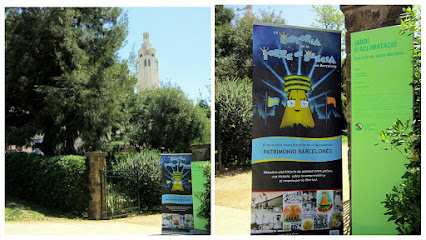
Mural de Francesc Candel
Explore the Mural de Francesc Candel in Sants-Montjuïc, a vibrant tribute to Catalan culture and a stunning visual experience in the heart of Barcelona.

Antic Parc d’Atraccions de Montjuïc
Experience nostalgia at Antic Parc d’Atraccions de Montjuïc, a historical amusement park offering vintage rides and stunning views of Barcelona's skyline.
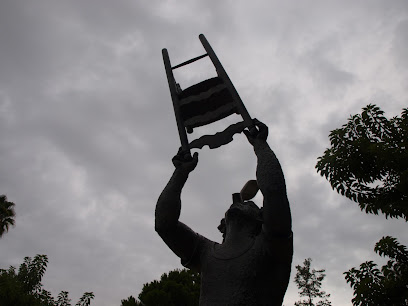
Unmissable attractions to see
Magic Fountain of Montjuïc
Experience the captivating Magic Fountain of Montjuïc in Barcelona, a dazzling display of water, light, and music under the city sky.
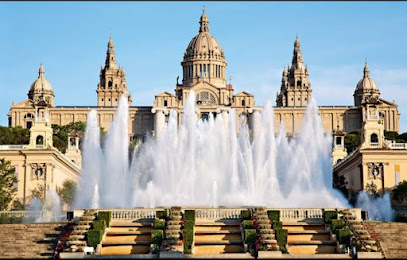
Montjuïc Castle
Discover Montjuïc Castle, a majestic historical fortress in Barcelona offering stunning views, rich history, and immersive cultural experiences.

Museu Nacional d'Art de Catalunya
Explore the rich history of Catalan art at Museu Nacional d'Art de Catalunya, a stunning museum in the heart of Barcelona's Montjuïc.

Poble Espanyol
Explore the architectural wonders and rich cultural heritage of Spain at Poble Espanyol, Barcelona's vibrant open-air museum.
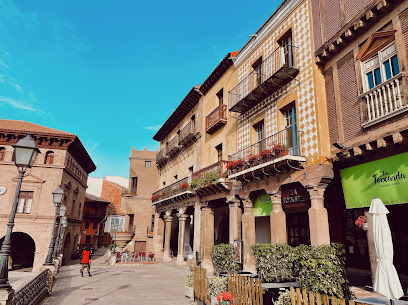
Telefèric de Montjuïc (Barcelona Cable Car)
Experience breathtaking views of Barcelona from the Telefèric de Montjuïc, a scenic cable car ride connecting the city to Montjuïc Hill's attractions.
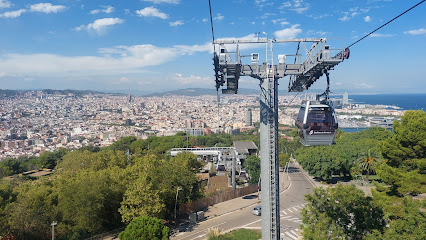
Montjuïc National Palace
Explore Montjuïc National Palace, Barcelona's cultural gem showcasing breathtaking art and stunning city views in an architectural masterpiece.
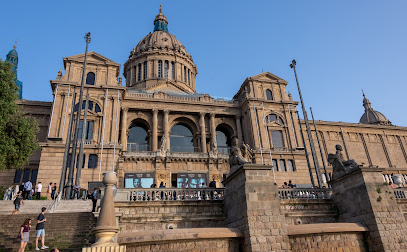
Mies van der Rohe Pavilion
Discover the Mies van der Rohe Pavilion in Barcelona, a stunning modernist masterpiece blending art, nature, and architectural brilliance.
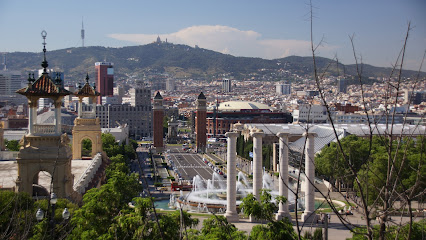
Mirador de l'Alcalde
Discover stunning panoramic views of Barcelona at Mirador de l'Alcalde, an essential stop for a picturesque experience in the heart of Montjuïc.
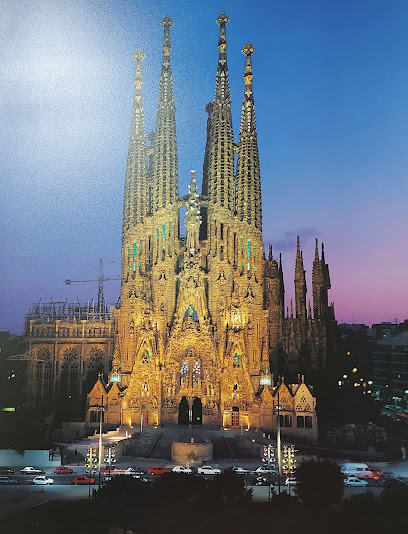
Jardins de la Rambla de Sants
Explore the tranquil beauty and cultural richness of Jardins de la Rambla de Sants in Barcelona, a perfect escape for nature lovers and art enthusiasts alike.

Montjuïc Lighthouse
Discover the stunning Montjuïc Lighthouse, a historical landmark offering breathtaking views and a glimpse into Barcelona's maritime heritage.
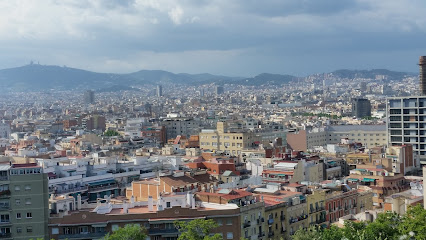
Essential places to dine
La Terraza Miró
Discover authentic Catalonian flavors at La Terraza Miró in Sants-Montjuïc, Barcelona - where traditional cuisine meets stunning views.
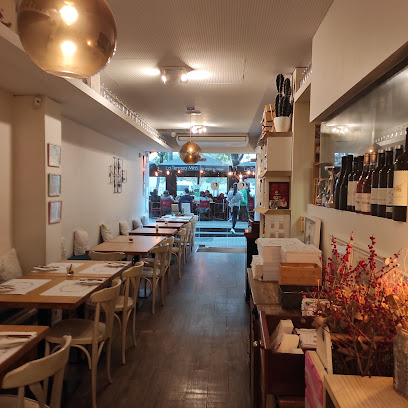
El Xalet de Montjuïc
Experience exquisite Mediterranean cuisine and breathtaking views at El Xalet de Montjuïc - Barcelona's premier fine dining destination.
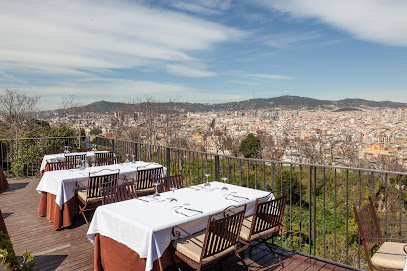
La Mundana
Experience authentic Mediterranean cuisine at La Mundana in Barcelona's Sants-Montjuïc district - where every meal is a celebration of flavor.
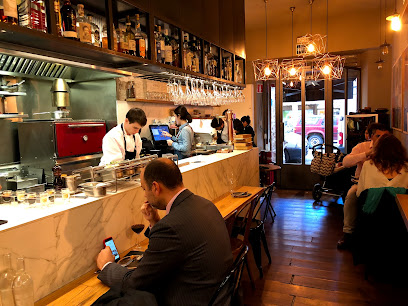
Zarautz
Explore Zarautz in Barcelona: A delightful fusion of Basque flavors in a vibrant setting offering exquisite Mediterranean cuisine.
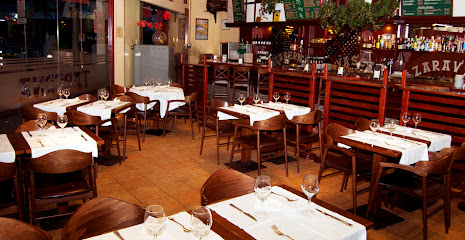
Xemei
Experience the best of Venetian cuisine at Xemei, an exquisite Italian restaurant in Barcelona's Sants-Montjuïc district.
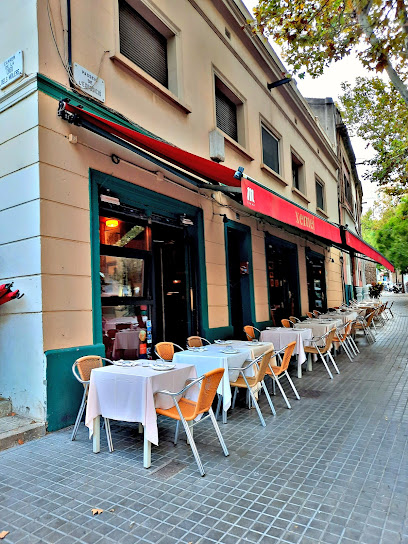
Restaurant Txalaparta
Discover authentic Basque cuisine at Restaurant Txalaparta in Barcelona—where tradition meets flavor in every dish.
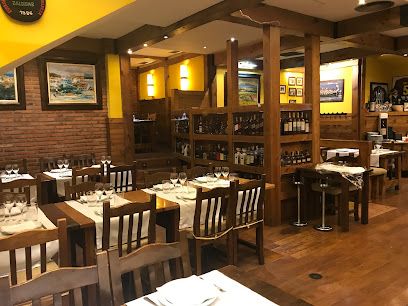
Restaurant La Font de Prades
Experience authentic Catalonian cuisine at Restaurant La Font de Prades - a family-friendly dining haven in Barcelona's Poble Espanyol.
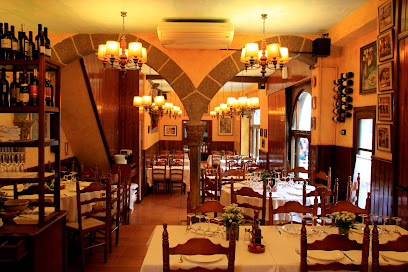
LA GUINGUETA del Pan&Oli
Savor creative tapas and refreshing cocktails at LA GUINGUETA del Pan&Oli, a Mediterranean delight in Barcelona's Sants-Montjuïc district.
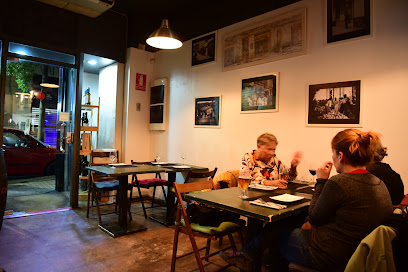
Casa Xica Restaurant i Bar a vins
Experience the best of Asian fusion and Mediterranean cuisine at Casa Xica in Barcelona’s vibrant Sants-Montjuïc district.
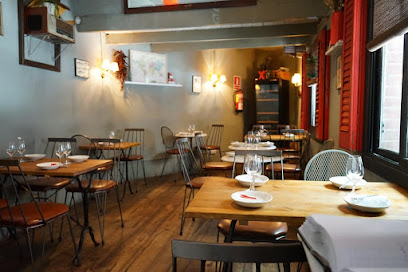
Albi Restaurant
Discover the flavors of Mediterranean cuisine at Albi Restaurant in Barcelona's Sants-Montjuïc district.

Markets, malls and hidden boutiques
Maremagnum
Discover the vibrant Maremagnum shopping mall in Barcelona, where shopping, dining, and entertainment meet stunning waterfront views.

Flying Tiger Copenhagen
Explore a treasure trove of unique gifts and quirky home essentials at Flying Tiger Copenhagen in Barcelona, where creativity meets affordability.
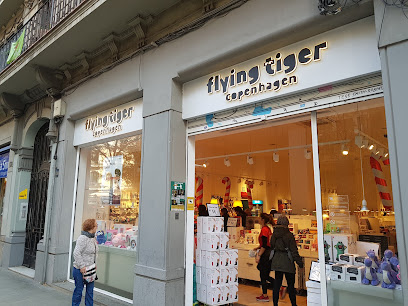
La Nostra Ciutat
Explore La Nostra Ciutat, a boutique gift shop in Barcelona's Ciutat Vella, offering unique artisan products and handcrafted treasures.
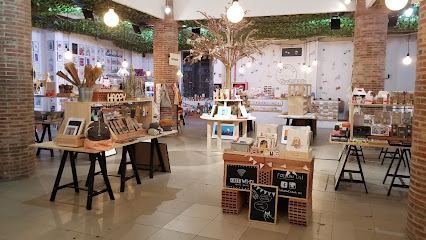
Muy Mucho Sants
Explore the vibrant array of stylish home goods at Muy Mucho Sants, your one-stop shop for unique décor in Barcelona.
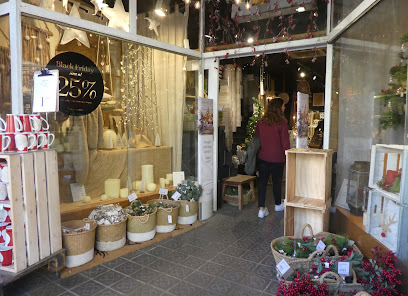
ALE-HOP
Explore ALE-HOP, Barcelona's vibrant gift shop offering unique souvenirs, local crafts, and whimsical treasures for every traveler.
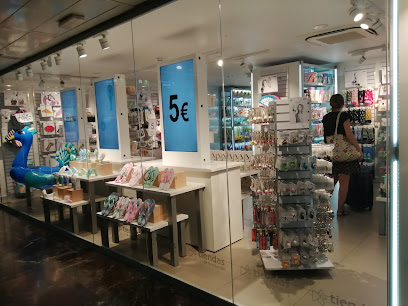
Kaburi Sants
Explore the ultimate game store in Barcelona's Sants-Montjuïc, where gaming dreams come true with a vast selection of board games, toys, and more.
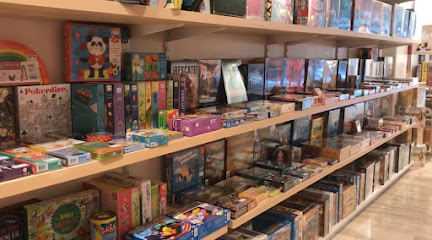
Vogue - The Premium Outlet
Discover unique fashion pieces at Vogue - The Premium Outlet in Barcelona, where style meets affordability in a vibrant shopping setting.
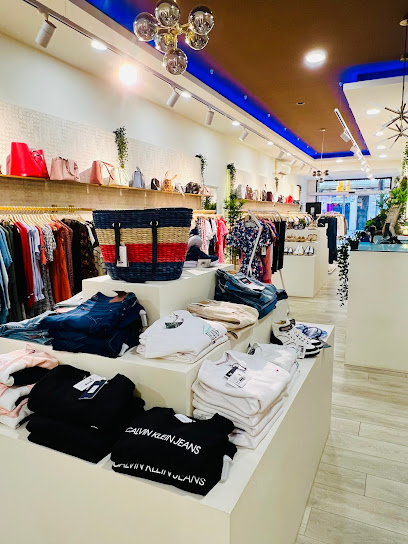
Divers
Explore Divers in Barcelona - Your go-to gift shop for unique souvenirs, local books, and convenience items in the city's vibrant transport hub.
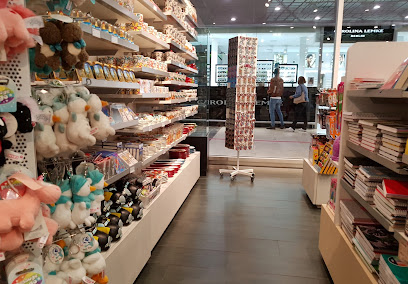
TANIS Boutique
Discover TANIS Boutique in Barcelona's Sants-Montjuïc, a stylish destination for unique women's and men's fashion that captures the essence of modern elegance.
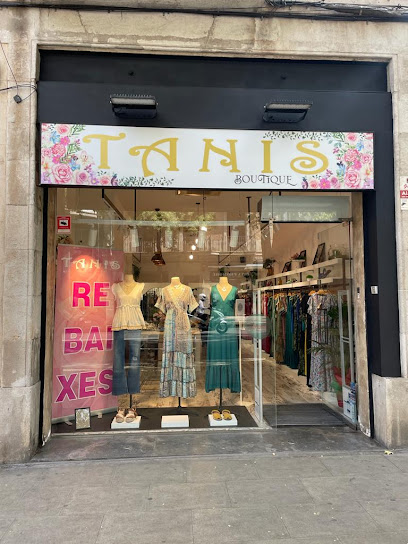
Carrer de sants
Explore Carrer de Sants, a vibrant shopping street in Barcelona filled with local boutiques, cafes, and a rich cultural experience.
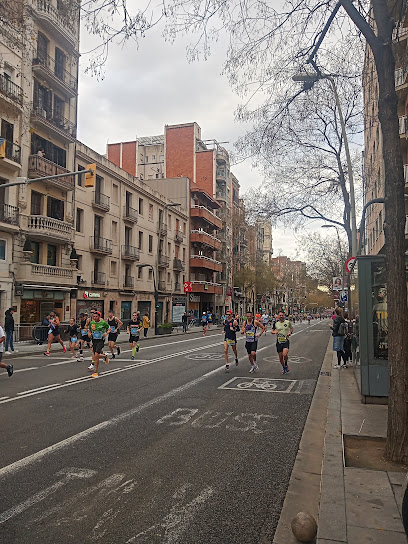
Essential bars & hidden hideouts
TAPS Bar
Experience the authentic flavors of Catalonia at TAPS Bar in Barcelona, offering a vibrant atmosphere and exquisite Mediterranean tapas.
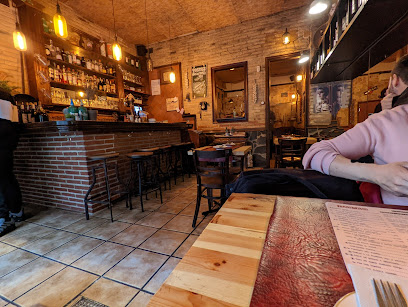
Salts - Terrassa Bar Montjuïc
Experience vibrant nightlife and stunning views at Salts - Terrassa Bar Montjuïc, a social hotspot in the heart of Barcelona.
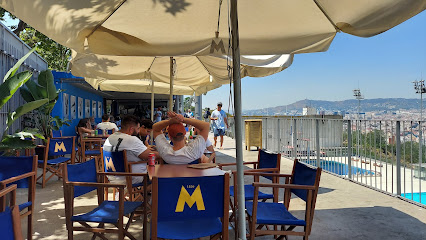
Bar Les Cascades
Experience the charm of Bar Les Cascades, where delicious coffee meets a dog-friendly atmosphere in the heart of Barcelona's Sants-Montjuïc.
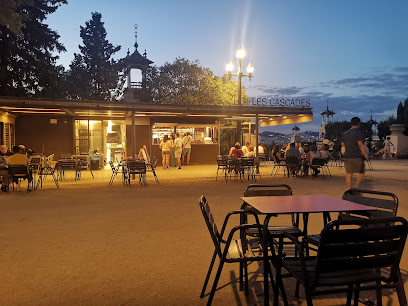
Cheers Sants
Experience the vibrant blend of Irish pub charm and Spanish tapas at Cheers Sants, a must-visit venue in Barcelona's Sants-Montjuïc district.
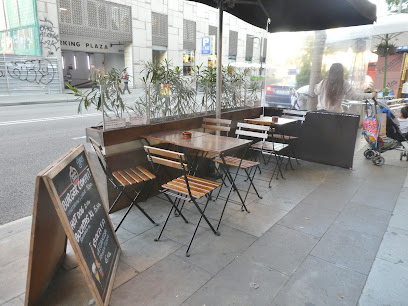
Taberna El Racó de Sants
Discover the vibrant flavors of Barcelona at Taberna El Racó de Sants, where craft beer meets authentic tapas in a lively brewpub atmosphere.

Macot | Bar a Vins
Experience the best of Barcelona's wine culture at Macot | Bar a Vins, where exquisite wines and delicious tapas create unforgettable moments.
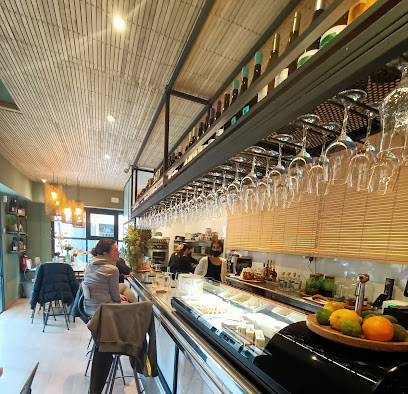
MALA HIERBA | Cocktail Bar
Experience the fusion of art and mixology at Mala Hierba, a unique cocktail bar in the heart of Barcelona's vibrant nightlife.

The Clock Terrace
Experience breathtaking views and exquisite cocktails at The Clock Terrace, Barcelona's premier cocktail bar situated atop Hotel Catalonia.
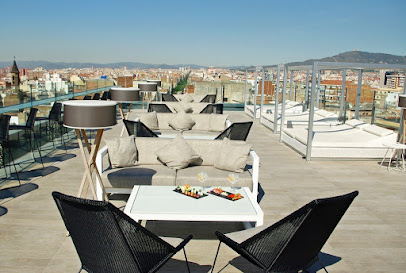
Bar Rafa Cocktails and Mixes
Discover the vibrant atmosphere and innovative cocktails at Bar Rafa Cocktails and Mixes in Sants-Montjuïc, Barcelona's hidden bar gem.

Gavin | Bar de copas
Experience the lively ambiance and diverse offerings at Gavin | Bar de copas, a must-visit bar in Barcelona's Sants-Montjuïc district.
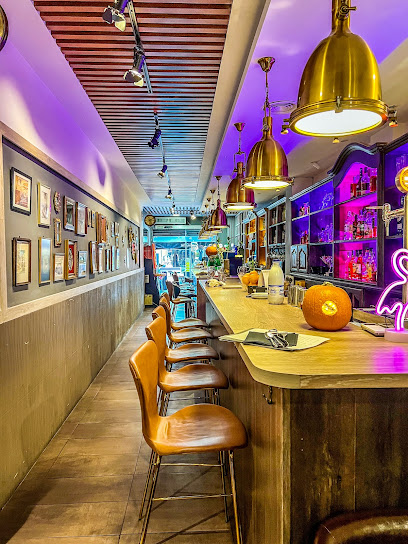
Local Phrases
-
- HelloHola
[oh-lah] - GoodbyeAdiós
[ah-dee-ohs] - YesSí
[see] - NoNo
[no] - Please/You're welcomePor favor/De nada
[por fah-vohr/deh nah-dah] - Thank youGracias
[grah-thyahs] - Excuse me/SorryPerdón/Lo siento
[pehr-dohn/loh see-ehn-toh] - How are you?¿Cómo estás?
[koh-moh ehs-tahs] - Fine. And you?Bien. ¿Y tú?
[byehn. ee too] - Do you speak English?¿Hablas inglés?
[ah-blahs een-glehs] - I don't understandNo entiendo
[noh ehn-tyehn-doh]
- HelloHola
-
- I'd like to see the menu, pleaseMe gustaría ver la carta, por favor
[meh goos-tah-ree-ah behr lah kahr-tah, por fah-vohr] - I don't eat meatNo como carne
[noh koh-moh kahr-neh] - Cheers!¡Salud!
[sah-lood] - I would like to pay, pleaseMe gustaría pagar, por favor
[meh goos-tah-ree-ah pah-gahr, por fah-vohr]
- I'd like to see the menu, pleaseMe gustaría ver la carta, por favor
-
- Help!¡Ayuda!
[ah-yoo-dah] - Go away!¡Vete!
[veh-teh] - Call the Police!¡Llama a la policía!
[yah-mah ah lah poh-lee-see-ah] - Call a doctor!¡Llama a un médico!
[yah-mah ah oon meh-dee-koh] - I'm lostEstoy perdido
[ehs-toy pehr-dee-doh] - I'm illEstoy enfermo
[ehs-toy ehn-fehr-moh]
- Help!¡Ayuda!
-
- I'd like to buy...Me gustaría comprar...
[meh goos-tah-ree-ah kohm-prahr...] - I'm just lookingSolo estoy mirando
[soh-loh ehs-toy mee-rahn-doh] - How much is it?¿Cuánto cuesta?
[kwan-toh kwes-tah] - That's too expensiveEsto es demasiado caro
[ehs-toh ehs deh-mah-syah-doh kah-roh] - Can you lower the price?¿Puedes rebajar el precio?
[pweh-dehs reh-bah-hahr ehl preh-thyo]
- I'd like to buy...Me gustaría comprar...
-
- What time is it?¿Qué hora es?
[keh oh-rah ehs] - It's one o'clockEs la una
[ehs lah oo-nah] - Half past (10)Las diez y media
[lahs dyehth ee meh-dee-ah] - MorningMañana
[mah-nyah-nah] - AfternoonTarde
[tahr-deh] - EveningNoche
[noh-cheh] - YesterdayAyer
[ah-yehr] - TodayHoy
[oy] - TomorrowMañana
[mah-nyah-nah] - 1Uno
[oo-noh] - 2Dos
[dohs] - 3Tres
[trehs] - 4Cuatro
[kwah-troh] - 5Cinco
[theen-koh] - 6Seis
[seys] - 7Siete
[syeh-teh] - 8Ocho
[oh-choh] - 9Nueve
[nweh-veh] - 10Diez
[dyehth]
- What time is it?¿Qué hora es?
-
- Where's a/the...?¿Dónde está...?
[dohn-deh ehs-tah] - What's the address?¿Cuál es la dirección?
[kwal ehs lah dee-rehk-syohn] - Can you show me (on the map)?¿Puedes enseñarme (en el mapa)?
[pweh-dehs ehn-seh-nyahr-meh (ehn ehl mah-pah)] - When's the next (bus)?¿Cuándo es el próximo (autobús)?
[kwan-doh ehs ehl proh-ksy-moh (ow-toh-boos)] - A ticket (to ....)Un billete (a ....)
[oon bee-yeh-teh (ah ....)]
- Where's a/the...?¿Dónde está...?
History of Sants-Montjuïc
-
Sants-Montjuïc has a rich history dating back to Roman times, when the area was known for its agricultural land and strategic location. The name 'Sants' is derived from the Roman settlement of 'Santi' that existed in the area. The neighbourhood began to develop significantly in the 19th century, evolving from a rural landscape into an urban habitat as Barcelona expanded.
-
The late 19th and early 20th centuries marked a period of rapid industrialization for Sants-Montjuïc. Factories, warehouses, and residential buildings sprang up to accommodate the growing population and workforce. This transformation was driven by the influx of migrants seeking work in the burgeoning textile and manufacturing industries, particularly in the area known as Sants.
-
Sants-Montjuïc played a pivotal role in the 1929 International Exposition held in Barcelona, which showcased the city’s modernity and cultural vibrancy. The Montjuïc area was transformed with the construction of the Palau Nacional, now home to the National Art Museum of Catalonia, and the picturesque Magic Fountain of Montjuïc, which became iconic symbols of the city.
-
During the Spanish Civil War (1936-1939), Sants-Montjuïc was a center of social and political activity. The area experienced significant turmoil, and many buildings were repurposed for war efforts. Following the war, under Franco's regime, Sants-Montjuïc faced strict censorship and repression, but the community remained resilient, maintaining cultural traditions and fostering a strong sense of identity.
-
In the late 20th century, Sants-Montjuïc underwent a cultural renaissance. The 1992 Summer Olympics brought renewed attention to the area, leading to the revitalization of Montjuïc and its parks, sports facilities, and cultural venues. This period marked the transformation of Sants-Montjuïc into a vibrant neighbourhood that celebrates its industrial heritage while embracing contemporary culture.
Sants-Montjuïc Essentials
-
Sants-Montjuïc is easily accessible from other neighborhoods in Barcelona. The main transportation hub is the Sants Estació, which connects national and international trains, as well as the metro (Line 3 and Line 5). From the city center, you can take metro lines or buses (such as the number 50, 65, or 109) that run frequently. Taxis and rideshare services are also widely available, offering a convenient option for direct travel.
-
Sants-Montjuïc is well-served by public transport, including the metro, buses, and trams. The metro lines (L1, L3, and L5) provide quick access to various points, while several bus routes connect different areas. Renting a bicycle is a great way to explore, as there are dedicated bike lanes and bike-sharing services (Bicing) available. Walking is also a pleasant option, especially in the parks and waterfront areas.
-
Sants-Montjuïc is generally safe for tourists, but it is wise to remain vigilant, especially in crowded areas like Plaça d'Espanya and near major attractions such as Montjuïc Castle. Petty crimes, such as pickpocketing, can occur, particularly on public transport and in tourist-heavy spots. Avoid walking alone late at night in poorly lit areas, especially around the Montjuïc Park.
-
In case of an emergency, dial 112 for immediate assistance in Spain. Local police stations and medical facilities are available in Sants-Montjuïc. It is advisable to have travel insurance that covers emergencies. For non-urgent medical issues, there are pharmacies within the neighborhood that can assist with over-the-counter medications.
-
Fashion: Do dress comfortably but respectfully, especially when visiting religious sites like the Montjuïc Castle. Avoid wearing overly casual or revealing clothing. Religion: Do respect local customs, particularly in churches. Cover your shoulders and knees when entering sacred sites. Public Transport: Do offer your seat to elderly passengers. Don't eat or drink on public transport. Greetings: Do greet locals with a friendly 'Hola' and a smile. Eating & Drinking: Do try local tapas and wines. Don't rush through your meals; dining is a leisurely experience in Spain.
-
To experience Sants-Montjuïc like a local, explore the local markets such as Mercat de Sants for fresh produce and traditional Catalan delicacies. Engage with locals in the parks, as they often enjoy picnicking and socializing. Consider attending local festivals, such as the Festa Major de Sants, to immerse yourself in the community's culture. Don't miss the Magic Fountain show at Montjuïc, which offers a captivating display of light and sound.
Nearby Cities to Sants-Montjuïc
-
Things To Do in Tarragona
-
Things To Do in Girona
-
Things To Do in Lleida
-
Things To Do in Pas de la Casa
-
Things To Do in Escaldes-Engordany
-
Things To Do in Andorra la Vella
-
Things To Do in Encamp
-
Things To Do in Soldeu
-
Things To Do in Canillo
-
Things To Do in La Massana
-
Things To Do in Arinsal
-
Things To Do in Ordino
-
Things To Do in El Serrat
-
Things To Do in Palma de Mallorca
-
Things To Do in Huesca













